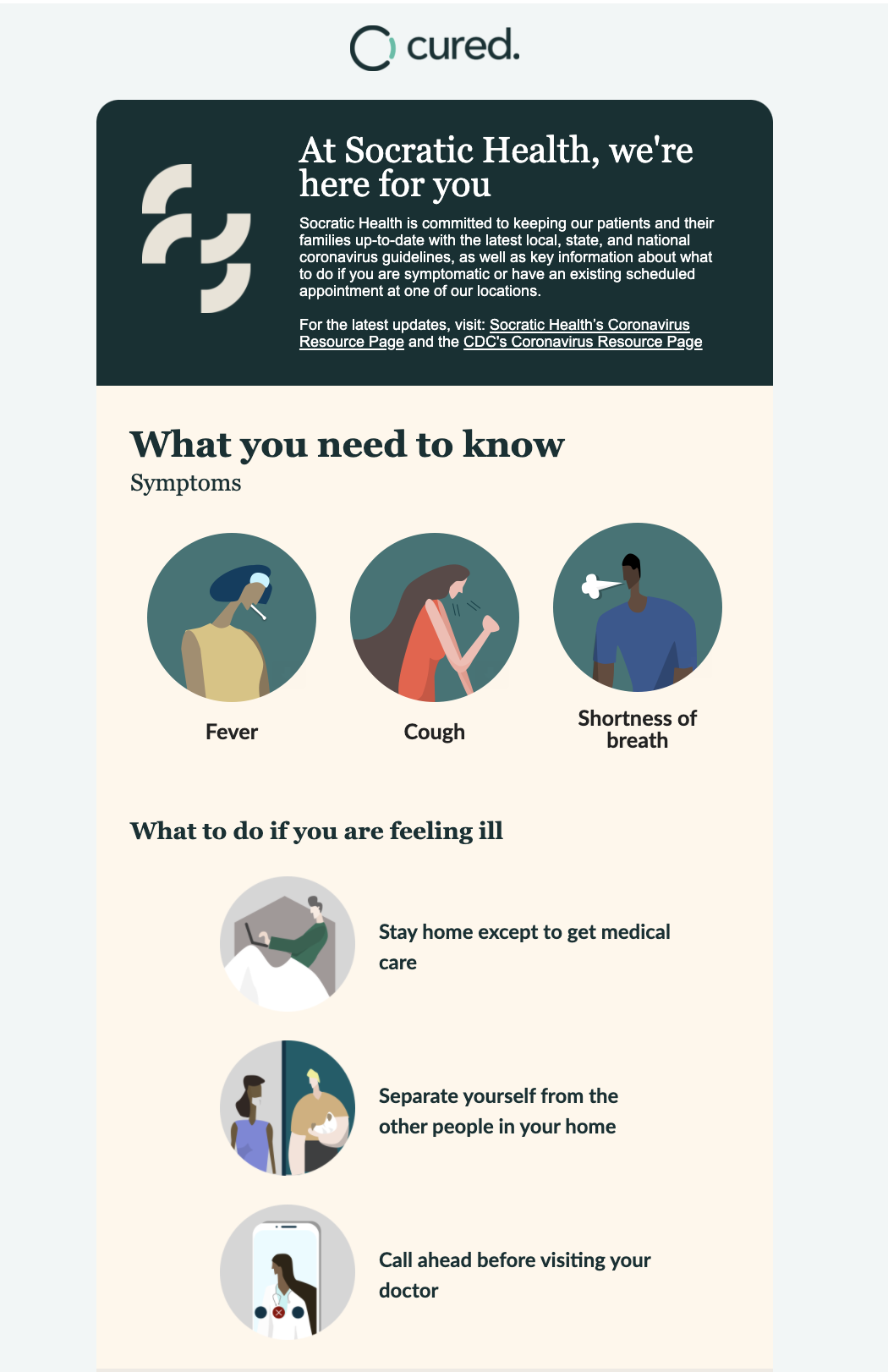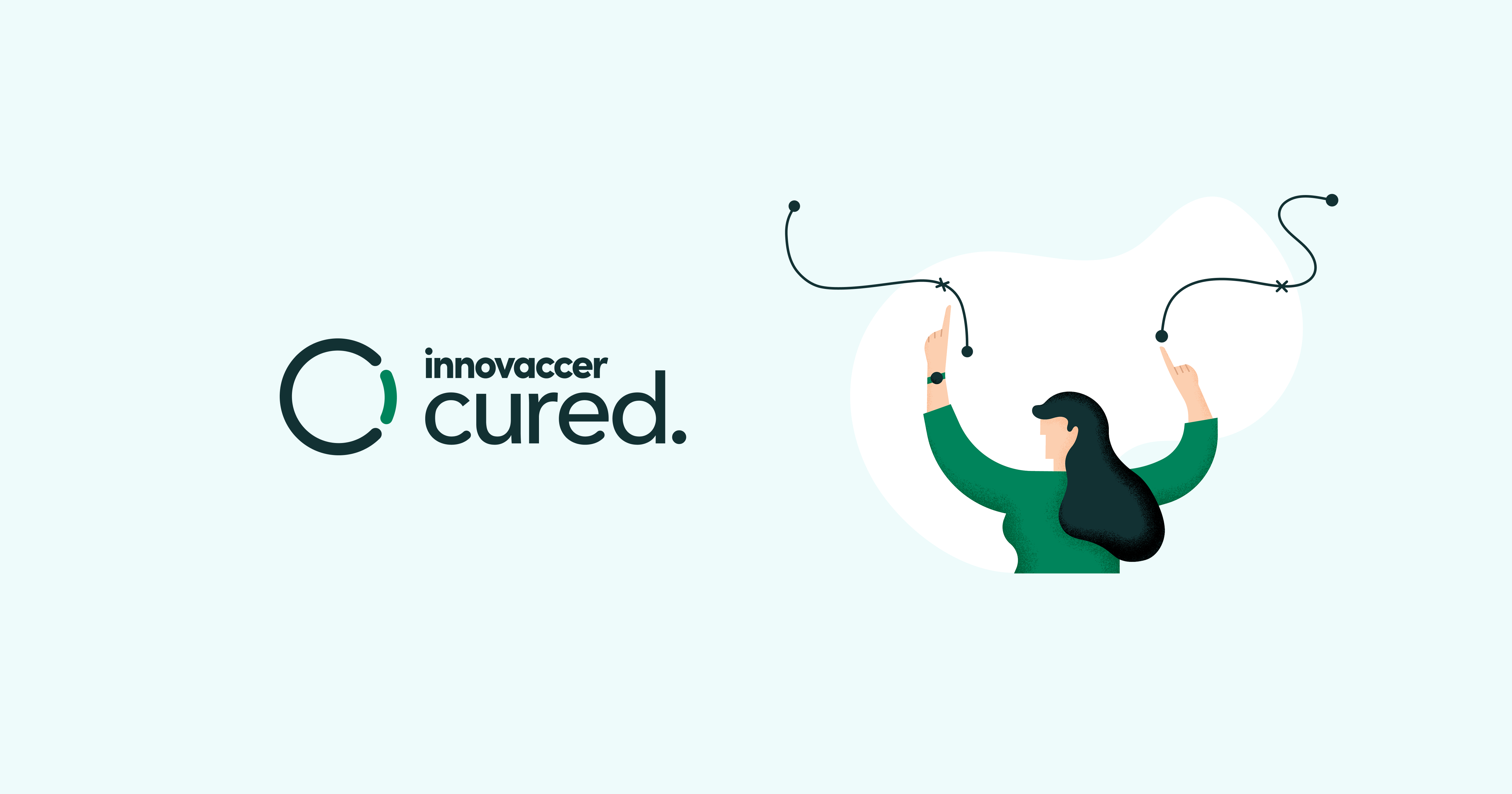Enabling Health Systems to Communicate Digitally During COVID-19

Cured is here to help health systems to communicate with their communities about managing the spread of the COVID-19 virus.
Over the last few weeks, most of us have received an unprecedented amount of email, SMS, and other digital communication on the subject of COVID-19 from brands we have relationships with — whether we remembered having those or not. So much so, that some of the largest email service providers (ESPs) have had massive system outages as they try to keep up with the volumes hitting their servers.
For example, our team has received related emails from across nearly every industry — bagel shops, barbers, airlines, athletic companies, our 401k provider, accounting firms, etc. Some very rightly should be emailing us during this time. Some are rather inappropriately using a crisis as an excuse to perform irrelevant outreach.
In contrast, very few of us have received communication via any channel from a health system that has our mobile number, email address, or mailing address. In further conversations with family, friends, and investors, our experience seemed to suggest this is the norm versus the exception. Those that had received communications were kind enough to forward them on from their providers (IU Health, UCHealth, OneMedical, etc.)
While it is incredible how the world has united across the public and private realms to create awareness, the most reputable source of information for many communities and the place where most individuals and their families think of when they think of care… the health system… has been lagging behind.
Why health systems have a key role in communication
Firstly, we must be incredibly empathetic of health systems during this time. They are deploying emergency preparedness plans at a scale and speed that few had ever really foreseen. They are needing to coordinate with national, state, and local governmental parties, in many cases, on an hourly basis. Executives and clinical leadership are working to implement new protocols, rapidly reallocate staff and budget, collate data, and procure the necessary equipment. Doctors, nurses, and others on the front lines of care are serving a worried patient base, while, also, worrying themselves about being properly equipped and staying safe.
However, it is for these reasons, not in spite of these reasons, that we believe this is such a critical time for health systems to communicate with their communities about managing the spread of the COVID-19 virus.
Second only to the CDC and major governmental agencies, healthcare providers are uniquely positioned to be the most trusted and accurate source of information for their constituents. They should be providing regular, prescriptive communication regarding prevention, symptoms, treatment, and best courses of action to keep the community-at-large safe, but, also, their staff and providers. This communication does not need to differ from that coming from governmental partners. Instead, it should be tightly coordinated and provide specific guidance for those patients seeking care at the health systems. We have already seen adverse outcomes when this does not happen. For example, there have been many examples, especially during the onset of the pandemic domestically, in which symptomatic patients were arriving at their primary care doctor’s office, urgent cares, and emergency rooms — putting themselves, other patients, and health system staff at greater risk.
Enabling health systems
Today, digital communication and the tools to enable it, are still new to the health system environment. Those organizations that have invested in these strategies and technologies (examples mentioned in the introduction) have been using them to email their patient base and communities with key information and direct them to a COVID-19 related information section on their website that is updated regularly.
Unfortunately, for the majority of health systems, this type of rapid communication distribution is not possible given that the underlying technology is not already procured or implemented. And, while sending out an email to a large group may not seem challenging, those industries that have been using email as a channel to communicate with their customers for years know that it is a more complex process than it may seem. From a technical perspective, domains need to be set up appropriately, IP addresses need to be warmed to ensure deliverability is optimal, contact information must be pulled securely from the EMR via the source data stores, amongst other complex considerations. From an operational perspective, content and creative assets need to be available, review and approval processes need to be established or adhered to… not to mention, a litany of other possible stakeholders who may need to be involved.
As healthcare technologists focused on helping health systems create meaningful, lasting relationships with individuals and their families via enterprise-scale Marketing Automation and Customer Relationship Management (CRM), we have been thinking critically about how we can help out in this time of need in a way that is valuable, timely, and relevant to support our health system clients. As a result of this brainstorm, we worked with our email service provider (ESP) technology partners to produce a solution for rapid digital communication because we strongly believe that health systems should be at the forefront of providing information to their communities and their staff during this time. This solution will allow healthcare providers to:
- Send email communications at scale
- Use prebuilt communication templates that contain relevant information from the CDC and are broadly applicable
- Quickly and easily customize communication with your branding and your coronavirus resource pages and protocols
- Deploy the solution in ~1 week
- Deliver the solution at little to no cost
- Ensure domain reputation and deliverability remain as optimal as possible

If our team or this solution can help during this time, please contact us at solutions@cured.health. Our thoughts are with your staff, your patients, and your community.



